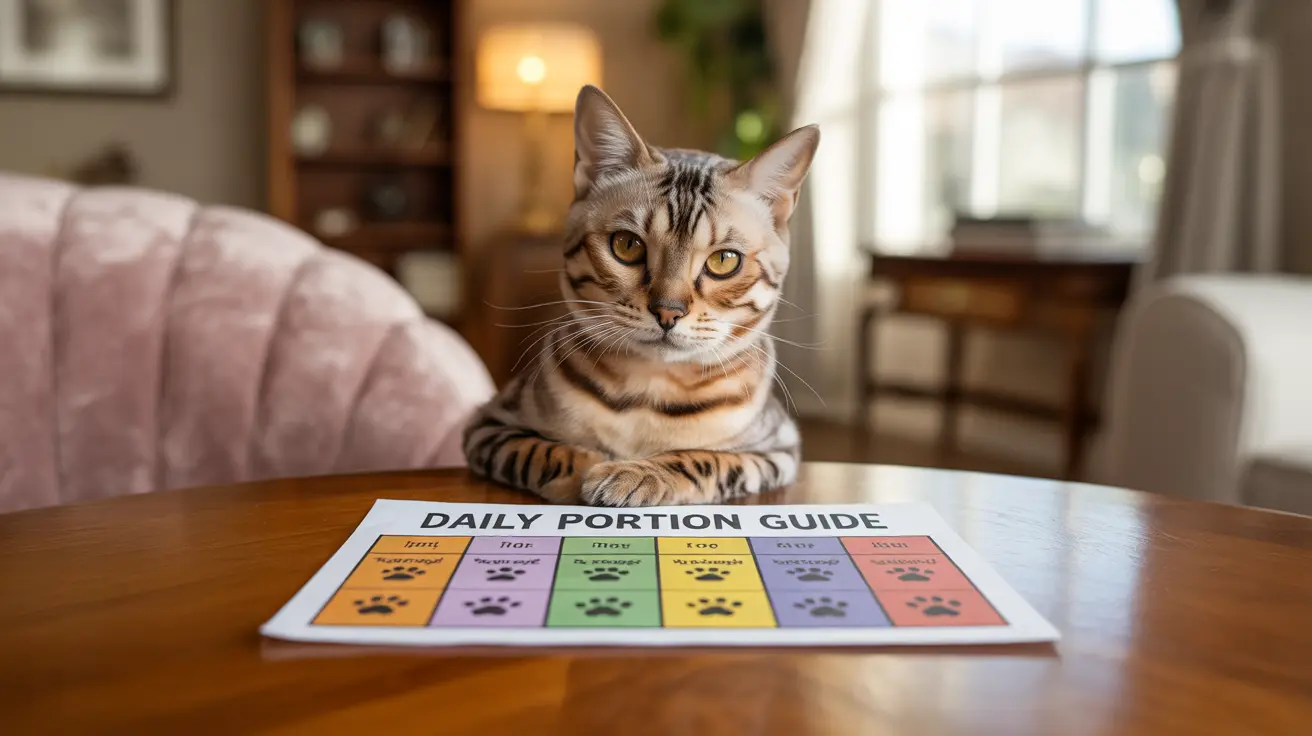Determining how much to feed a cat is a crucial aspect of pet care that directly impacts your feline friend's health and longevity. While the basic rule of thumb suggests 20-30 calories per pound of body weight daily, various factors influence the ideal portion size for your specific cat.
In this comprehensive guide, we'll explore proper feeding amounts based on scientific research and veterinary recommendations, helping you create an optimal feeding plan for your cat's unique needs.
Understanding Basic Caloric Needs
Adult cats typically require between 20-35 calories per pound of body weight daily. For example, a 10-pound cat usually needs about 200-250 calories per day to maintain a healthy weight. However, this baseline can vary significantly depending on factors such as age, activity level, and overall health status.
Active cats may need up to 40% more calories than their sedentary counterparts. A highly active 10-pound cat might require 350 calories daily, while a less active indoor cat of the same weight might only need 200 calories.
How Much to Feed a Cat Chart
Use this basic feeding chart as a starting point for determining your cat's daily portions:
- 5-pound cat: approximately 125-140 calories daily
- 10-pound cat: approximately 200-250 calories daily
- 15-pound cat: approximately 300-375 calories daily
- 20-pound cat: approximately 400-500 calories daily
For wet food, this typically translates to:
- 5-pound cat: 2.5-3 oz daily
- 10-pound cat: 3.5-4 oz daily
- 15-pound cat: 5-5.5 oz daily
Adjusting Portions for Different Life Stages
Kittens require significantly more calories per pound than adult cats – often 2-3 times as much – to support their rapid growth. Senior cats (7+ years) generally need fewer calories, typically around 180-220 calories daily for a 10-pound cat.
Pregnant or nursing cats have substantially increased needs, often requiring 2-4 times their normal intake, especially during lactation. Always consult with your veterinarian for specific feeding recommendations during these special life stages.
Feeding Frequency and Scheduling
Most adult cats benefit from having their daily food divided into at least two meals. Some cats naturally prefer eating multiple small meals throughout the day, which better mimics their natural feeding patterns in the wild.
Free feeding (leaving food available all day) is generally not recommended for adult cats, as it often leads to overconsumption and obesity. Instead, establish consistent feeding times to help create routine and monitor your cat's appetite.
Wet vs. Dry Food Considerations
When feeding wet food, portion sizes will appear larger due to the higher moisture content (70-80% water). Dry food is more calorie-dense, requiring smaller portions to meet the same caloric needs. Many veterinarians recommend a combination of both to provide optimal nutrition and hydration.
Frequently Asked Questions
How much should I feed my cat per day based on its weight and activity level?
Calculate 20-35 calories per pound of body weight for adult cats. Highly active cats need the upper range (30-35 calories per pound), while less active cats need the lower range (20-25 calories per pound).
What are the differences in feeding requirements for spayed/neutered versus intact cats?
Spayed/neutered cats typically require 20-30% fewer calories than intact cats due to changes in metabolism. Adjust portions accordingly to prevent weight gain after the procedure.
How do I determine the right portion sizes for a cat prone to weight gain or needing weight loss?
For weight loss, reduce daily calories by 20-40% of maintenance needs while monitoring weight loss progress. Aim for a safe weight loss rate of 0.5-2% body weight per week.
Can I feed my cat wet food, dry food, or a combination, and how do I adjust the portions accordingly?
You can feed either or both. When combining, reduce portions of each type proportionally to maintain appropriate total daily calories. For example, if feeding both, reduce each by roughly 50% of their normal individual portions.
Why do senior cats need fewer calories than adult cats, and how should I adjust their diet accordingly?
Senior cats typically have lower energy requirements due to decreased activity and metabolism. Reduce portions by approximately 20-30% from adult maintenance levels, and consider switching to a senior-specific formula.
Remember to consult with your veterinarian before making significant changes to your cat's feeding routine, especially if your cat has specific health conditions or weight management needs.






